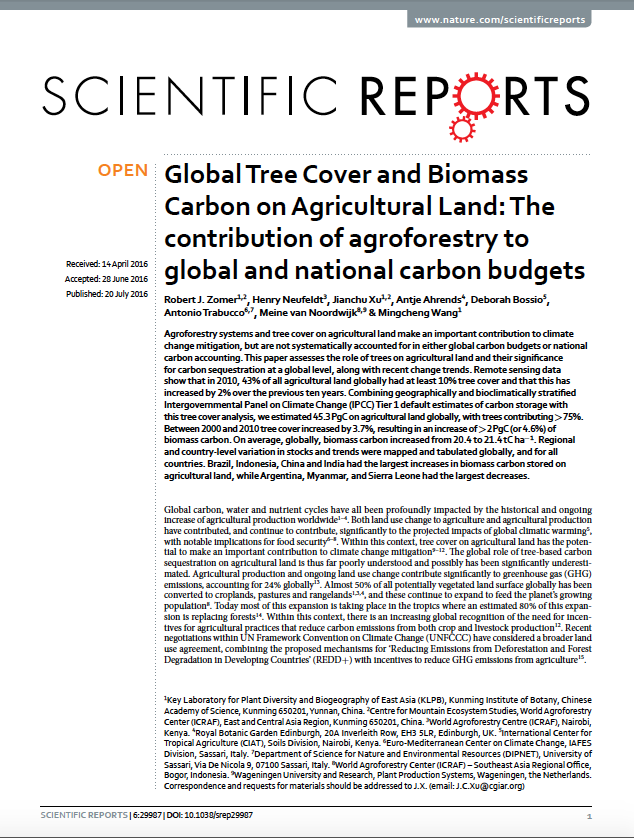Resource information
Agroforestry systems and tree cover on agricultural land make an important contribution to climate change mitigation, but are not systematically accounted for in either global carbon budgets or national carbon accounting. This paper assesses the role of trees on agricultural land and their significance for carbon sequestration at a global level, along with recent change trends. Remote sensing data show that in 2010, 43% of all agricultural land globally had at least 10% tree cover and that this has increased by 2% over the previous ten years. Combining geographically and bioclimatically stratified Intergovernmental Panel on Climate Change (IPCC) Tier 1 default estimates of carbon storage with this tree cover analysis, we estimated 45.3 PgC on agricultural land globally, with trees contributing >75%. Between 2000 and 2010 tree cover increased by 3.7%, resulting in an increase of >2 PgC (or 4.6%) of biomass carbon. On average, globally, biomass carbon increased from 20.4 to 21.4 tC ha−1. Regional and country-level variation in stocks and trends were mapped and tabulated globally, and for all countries. Brazil, Indonesia, China and India had the largest increases in biomass carbon stored on agricultural land, while Argentina, Myanmar, and Sierra Leone had the largest decreases.
Scientific Reports 6, Article number: 29987 (2016)


